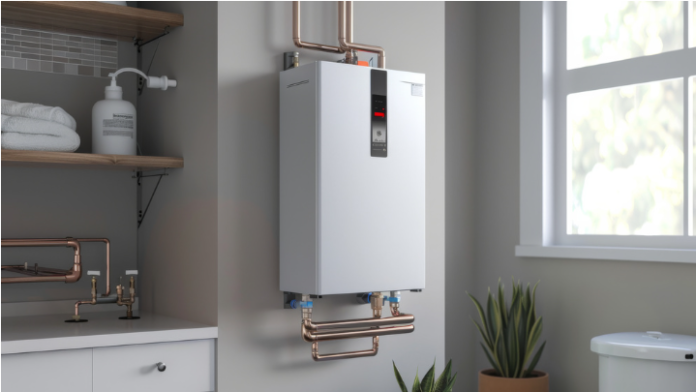Although tankless water heaters have been around since the late 1920s, they did not catch on in the U.S. housing market until the mid-1990s. Today, they still aren’t as popular as traditional tank systems. They do have their pros and cons. For example, a tankless water heater tends to work better in warm climates compared to cold.
A tankless water heater is more or less a unit that heats water on-demand. Water flows into the unit and across a heat exchanger powered by either gas or electricity. The hot water then exits the device and flows to a fixture – maybe a faucet, dishwasher, shower head, etc.
Incoming Water Temperature Makes a Difference
A tankless water heater tends to work better in warmer climates for a couple of reasons. The first and most important is the temperature of the incoming water. Incoming water temperature has a significant impact on tankless water heater performance because it directly influences how hard the unit needs to work.
In warmer climates, ground water temperatures tend to remain fairly stable. Likewise, incoming water from municipal supplies is pretty warm. But in cold climates, incoming water can be much colder. Temperatures of 40°F or lower are not unusual in the northeast and upper Midwest.
Imagine a tankless water heater in Utah having to heat water coming in at 40°. The amount of energy required to quickly make that water usable is significant. Now imagine that same unit heating water in Florida. The water may already be at 70° as it enters the unit. The water heater needs to do significantly less work.
Other Factors Involved
Incoming water temperature is arguably the biggest influence on tankless water heater performance. But there are other things that factor into the equation. Another big one, according to Utah’s Comfort Solutions, is flow rate.
When Comfort Solutions installs a new tankless water heater for a customer in West Haven or Sandy, installers are sure to have a discussion with customers about flow rate. In colder climates, tankless water heaters can put out less water as temperatures drop.
Consider a unit rated at 5 gallons per minute at 70°F. If exterior temperatures drop into the 20s, that same unit might only be capable of producing 2-3 gallons per minute. The more work the unit needs to do, the less hot water it can produce in a given amount of time.
Installation technicians also need to talk to customers about:
- Temperature Fluctuations – Homeowners in cold climates should expect fluctuations between hot and cold water, especially if multiple fixtures are being used simultaneously.
- Energy Consumption – Homeowners also need to be prepared for higher energy consumption during the winter months. A tankless water heater will consume quite a bit more energy to achieve the same output when temperatures start dropping.
None of these issues is as concerning in regions with warmer climate. In Florida for example, temperature changes are not so extreme. Even on the coldest winter days, you’re not talking about persistent sub-freezing temperatures. And during the summer months, tankless water heaters barely need to work in the Sunshine State.
There are things homeowners in colder climates can do to maximize the output of a tankless water heater. But the reality is that tankless heaters are not ideally suited for cold climates. Installing a hybrid system would allow tankless water heating during the summer and more traditional heating during the winter.
If you live in a colder climate and are considering a tankless water heater, do some research preform making a decision. Don’t just assume a tankless model will work flawlessly.

